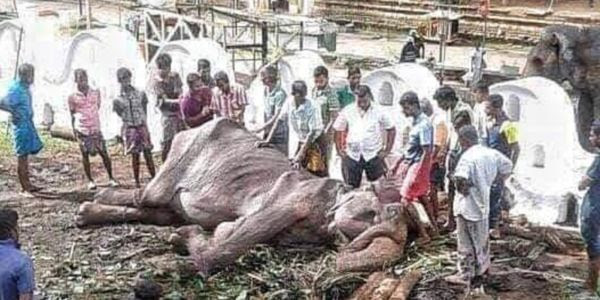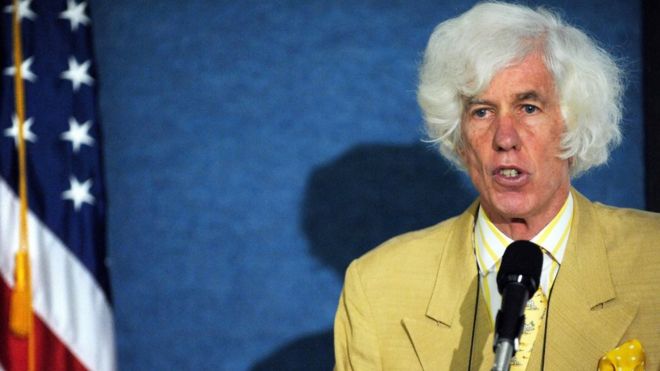Olifant
Tikiiri is onlangs overleden, zij haalde vorig jaar nog de
internationale media toen foto’s van haar verschenen waarop te zien
was hoe mager en oververmoeid ze was…..
Echter
niet alleen olifanten als Tikiiri, waarvan er zo’n 60 op Sri Lanka
zijn, olifanten die toeristen moeten vermaken, lopen gevaar het loodje te
leggen, ook de nog in de wildernis wonende olifanten zijn hun leven
niet zeker, zo gauw ze in ‘aanraking komen’ met de mens worden ze
vergiftigd of op een andere manier vermoord……
In 2019 werden er volgens activisten 361 vermoord, ofwel dagelijks gemiddeld 1……
Lees en
teken de petitie ajb (en geeft hetr door!), roep de Sri Lankaanse regering op
onmiddellijk actie te ondernemen om deze wonderlijk mooie en slimme
dieren te beschermen tegen de grootste parasiet op aarde, de mens:
Update:
Tikiiri the Elephant Died as She Lived, Neglected and in Captivity.

We’ve got some sad news. We’ve
learned that Tikiiri, the Sri Lankan elephant that captured the
world’s heart last year, has
died! The world
first learned of Tikiiri when images of the emaciated and exhausted
elephant showed up online. She,
along with 60 other elephants, had been forced to walk for miles as
part of the annual Buddhist festival Esala Perahera.
This tragic news should motivate us
to help the remaining Sri Lankan elephants, many
of which are being poisoned or otherwise killed as they come into
contact with humans. Activists say 361 animals were killed in 2019
alone.That’s
why we are asking you to sign this petition to urge Sri Lanka’s
government to act immediately and pass enforceable punishments for
murdering the nation’s elephants.
Thank you,
Andrew
M.
The Care2 Petitions Team
Hier de petitietekst:
Sri
Lanka’s Elephant Death Count Just Hit a Gruesome Record
-
van: Care2
Team - ontvanger: The
Government of Sri Lanka
The world was horrified when, in
2019, Kanakota the elephant collapsed and died in the streets of Sri
Lanka from exhaustion after being forced to endure group after group
of tourists strapped to his back. Now, as we enter a new decade,
we’re learning that Kanakota was not an outlier but rather a symbol
of a much larger
evil. In 2019, 361
elephants were killed in Sri Lanka, and almost 85% of the death count
can be attributed to humans.
Sri
Lanka must update its laws to make the punishment for killing an
elephant proportionate and enforceable! Sign the petition today.
The
nature of these killings is just as shocking as the number. Elephants
are tangled up and fried in electric fences, blown up with
explosives, and even poisoned.
Just last September, 7
elephants all perished when they consumed food that had been laced
with poison and set out as a trap.
Farmers and villagers think they have the
right to murder these elephants,
whose only crimes are wandering into “human territory”
looking for food. And who can blame them when their habitats
and food sources are disappearing
and turning into that very same “human territory?”
This
astronomical death count makes up almost 5% of the entire country’s
wild elephant population.
Killing these magnificent animals is illegal, but the government has
failed
to enforce this law consistently. Part of the problem is that,
technically, the penalty for killing an elephant is death. This
is unenforceable
within the context of the country’s Flora and Fauna Protection
Ordinance, not to mention ludicrous,
cruel, and outdated.
Sri Lanka must create an entirely new, enforceable, and proportionate
punishment for the slaying of elephants.
This must happen now.
Sri Lanka’s Parliament has a history of dragging its feet when it
comes to the protection of animals. The Animal Welfare Bill, the
country’s first attempt to update animal cruelty law since 1907,
gained Cabinet approval in 2016 and yet has stalled and languished in
Parliament ever since. This is not a good sign.
Please
sign the petition and urge Sri Lanka’s government to act immediately
and pass new, fairer, and enforceable punishments for murdering
elephants.



